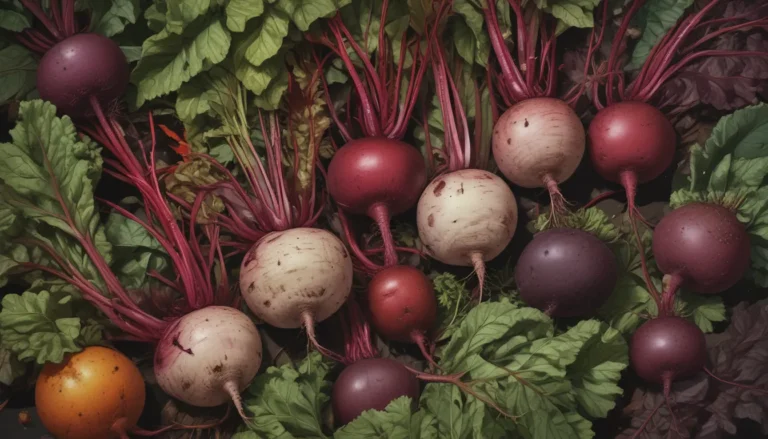Comprehensive Guide to Growing Violets in Containers

When I was 19, I had the opportunity to travel through Europe for the first time. One memory that still sticks with me is the stunning beauty of the houses in the Austrian countryside. I vividly recall the picturesque scenes of mountains rising behind dark log-wood houses adorned with delicate window boxes filled to the brim with vibrant violets.
Fast forward to today, and while I have yet to add window boxes to my own home, I have developed a deep appreciation for the beauty and versatility of flowers, especially when grown in containers. One such way to add charm and allure to your home is by growing violets in containers, whether they embellish your front porch steps or add a pop of color to your back deck.
The allure of growing violets in containers lies in their ability to enhance the beauty of your home while offering the flexibility to place them wherever you desire. Whether you want to brighten up your front porch, create a floral oasis on your back deck, or line your garden with stunning blooms, growing violets in containers allows you to do so effortlessly.
The practical aspect of container gardening also comes into play, particularly if you have kids and pets running around your yard. By elevating the delicate violets in containers, you can protect them from being trampled and keep them safe while still enjoying their beauty.
In this comprehensive guide, I will walk you through everything you need to know about growing violets in containers, from selecting the right cultivars to managing pests and diseases. Let’s dive in and transform your outdoor space with the enchanting beauty of violets!
What You’ll Learn
In this guide, we will cover the following topics to help you successfully grow violets in containers:
- A Bit About Violets
- Why Grow Violets in a Container?
- Choosing the Right Container
- Preparing Your Container
- How to Grow
- Growing Tips
- Cultivars to Select
- Managing Pests and Disease
A Bit About Violets
Before we delve into the details of growing violets in containers, it’s essential to understand a bit about these charming flowers. The Viola genus encompasses three main groups of flowers: violets, violas, and pansies. Violets are typically wildflowers, while pansies are cultivated varieties, and violas can fall into both categories. These flowers are a delightful mix of annuals and perennials, so it’s crucial to check before planting to ensure proper care for your violets.
Why Grow Violets in a Container?
The decision to grow violets in containers is ultimately a matter of preference. While you can create a stunning display of colors by filling a flower bed with pansies and violas, growing them in containers offers a myriad of benefits. The flexibility to move the containers around your home, protect the blooms from being trampled, and provide a suitable environment for the flowers to thrive are just a few advantages of container gardening. Additionally, growing violets in pots allows you to extend the growing season by bringing them indoors when temperatures become extreme.
Choosing the Right Container
When selecting a container for your violets, ensure it is at least four inches deep to accommodate the plants’ root systems. Violas prefer some elbow room, so the general guideline is to plant one every six to eight inches of container space. Whether you opt for a small pot or a larger window box, make sure the container has proper drainage holes to prevent waterlogging, and consider using a light-colored container in warm climates to avoid overheating the roots.
For instance, you can plant ‘Lilac Ice’ Viola cornuta in a smaller pot or a larger window box, ensuring adequate spacing for the plants to thrive. By following these guidelines and preparing your container with proper drainage, you can create an ideal environment for your violets to flourish.
Preparing Your Container
To provide your violets with a nutrient-rich and well-draining soil, consider filling your pots with a potting mix amended with a balanced NPK fertilizer or garden soil enriched with compost or well-rotted manure. Keep in mind that violets prefer slightly acidic soil with a pH between 5.4-5.8, so testing and adjusting the pH level accordingly is essential to support healthy growth.
How to Grow Violets in Pots
Most violets thrive in USDA Hardiness Zones 3-9, but always refer to the seed packet for specific planting instructions. For cooler regions, sow seeds indoors eight to twelve weeks before the last frost date, either in seed trays or directly into containers. Alternatively, you can sow seeds outdoors in late fall or when temperatures consistently drop below 70°F in warmer climates. By following these guidelines and providing adequate care, your violets will reward you with beautiful blooms that capture the essence of spring.
Propagating Seeds
When propagating violet seeds, handle them delicately, as they are tiny and require gentle care. Whether you choose to sow them in seed trays or directly in containers, create an optimal environment for germination by maintaining proper moisture levels and providing sufficient light. Thinning the seedlings and transplanting them into their permanent containers once they have developed true leaves are crucial steps in ensuring the healthy growth of your violets.
Violet Flower Container Care
After transplanting your violets into their permanent containers, caring for them is relatively straightforward. Ensure they receive adequate water, maintain proper soil moisture, and provide the necessary sunlight exposure to promote healthy growth and vibrant blooms. Additionally, fertilizing with a high-phosphorus flower fertilizer, applying organic mulch, and deadheading fading blooms are essential practices to sustain the longevity of your violets.
Growing Tips
- Sow seeds at the appropriate time based on your region’s climate.
- Provide consistent water and adjust based on rainfall.
- Fertilize regularly with a high-phosphorus flower fertilizer.
- Apply organic mulch to keep roots cool and moist in warmer climates.
Cultivars to Select
While most viola varieties can thrive in containers, consider planting Swiss Giant Mixture or Pansy Mix for a captivating display of colors and compact blooms. These cultivars offer a range of vibrant hues and flower sizes, making them an excellent choice for container gardening. By selecting the right cultivars and planting them in well-prepared containers, you can transform your outdoor space into a floral paradise.
Managing Pests and Disease
Although violets are relatively resistant to pests and diseases, they may occasionally encounter issues such as crown rot, black root rot, and downy mildew. By ensuring proper planting practices, monitoring soil pH levels, and practicing good hygiene, you can prevent and address common problems that may affect your violets. Implementing natural pest control methods, such as using diatomaceous earth or neem oil, can help protect your plants from aphids, spider mites, and other pests.
Embrace the Beauty of Violets in Containers
In conclusion, growing violets in containers is a rewarding and enjoyable experience that allows you to bring the beauty of these charming flowers into your home. By following the guidelines outlined in this comprehensive guide, you can successfully cultivate violets in containers and create a stunning display of colors and blooms that will brighten up your outdoor space. Whether you are a seasoned gardener or a novice enthusiast, exploring the world of container gardening with violets is a delightful journey filled with beauty, joy, and endless possibilities. Let your violets welcome the spring and transform your outdoor space with their enchanting allure!
If you have any questions or tips about growing violets in containers, feel free to share them in the comments below. Happy gardening!
Keywords: violets, containers, gardening, flowers, cultivars, pests, diseases, propagating, care, growing tips, planting
Target Audience: Gardening enthusiasts, novice gardeners, container gardening enthusiasts





